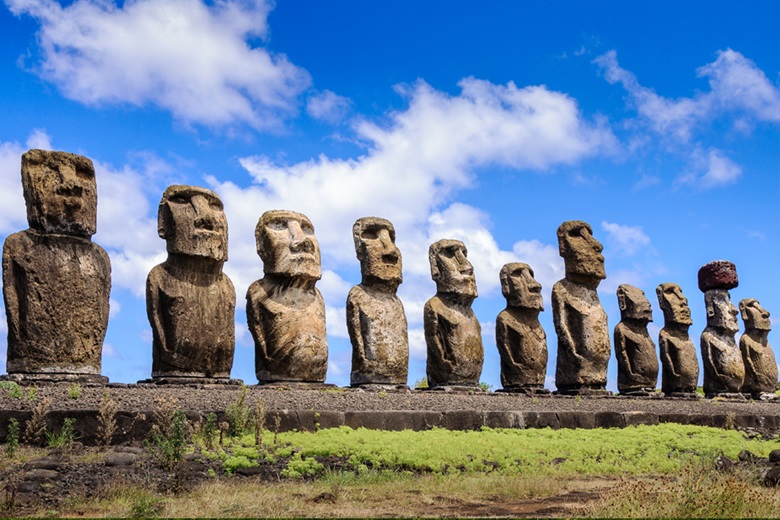Unveiling of the Easter Island Moai

Excellencies
Messers Secretaries and other Representatives of the Governmernt of Singapur
Friends of our neighboring Institutions
Colleagues of the APEC Secretariat
Ladies and Gentlemen
Messers Secretaries and other Representatives of the Governmernt of Singapur
Friends of our neighboring Institutions
Colleagues of the APEC Secretariat
Ladies and Gentlemen
I feel proud and honored in receiving this Moai from Easter Island on behalf of the APEC Secretariat.
It is indeed a generous gift from the Government of Chile to commemorate the visit of President Ricardo Lagos to this building in May of this year. That was the first visit of a Head of State to our Secretariat.
I appreciate the words of Ambassador Flisfisch and I thank him for his permanent support and personal interest on APEC and its work.
The Polynesian people that populated Easter Island, part of the Chilean territory since 1882, were magnificent navigators. They originated from East Asia, and only guided by stars, currents and birds, crisscrossed the Pacific in fragile but practical double-hulled canoes. They navigated from the Marquesas to Tonga and Samoa, to New Zealand, Tahiti, Hawaii and Easter Island. This migration took centuries and required, according to the Chilean anthropologist Jose Miguel Ramirez, and I quote "the development of special technologies and skills, combined with extraordinary navigating capabilities" According to most studies, the first occupants of Easter Island arrived in the seventh century.
Legend tell us that Ariki Hotu Matu'a was the leader of the original expedition that discovered Te Pito O Te Henua, or the Navel of the World, as the island was originally named. Rapa Nui, or Big Paddle, because of its shape, is a more recent name. The final one, Easter Island, was given to it by a Dutch captain, Jacob Roggeveen in April 1772. Rapa Nui is very isolated: it is 3.700 kilometers from the coast of South America and 2.500 kilometers from its nearest neighbor in the Pacific, Pitcairn Island.
In this splendid isolation, its very imaginative people gave birth to extraordinary manifestations or artistic creativity and a complex social order.
The original moai were images of ancestors and constituted in their placement an evidence of genealogical ties to the land by clans or families. Each moai, of which more than one thousand were sculpted during several centuries, kept the mana or spirit of the ancestor incarnate in each image.
Today, the moai is also a well know image of Chile.
It is said that the currents of this Ocean helped the Polynesians to arrive in Eastern Island in the distant past. Today, the currents of trade bring Chilean products to distant shores in the Asia Pacific region. And we would like to think that the Moai represent the spirit of our organization, dedicated to promote the establishment of a new community in the region, That is why we think that it is so appropriate that this Moai should be placed at the door of our Secretariat, as a guardian of our commitments and objectives.
The APEC Secretariat expresses its gratitude to President Lagos and the people of Chile for this gift that now stands proudly in front of the APEC Secretariat.
We have placed it in its ahu, or altar, surrounded, according to tradition, with hanu hanu, red scoria or lava, to maintain its mana. Thanks also to Mr. Pakarati, a modern sculptor from rapa Nui, who maintains alive the art of his ancestor as a Tangata Maori Anga Moai, or wise Moai Carver.
And also thanks to the navigators that brought this moai to Singapore, the Compania Sudamericana de Vapores, which very generously transported it as a gesture to our Government and our Secretariat. May the currents, the stars and the winds bring them always to safe port.
Ia Ora Na, welcome, moai from Rapa Nui, to the Secretariat of the Asia Pacific Cooperation.

